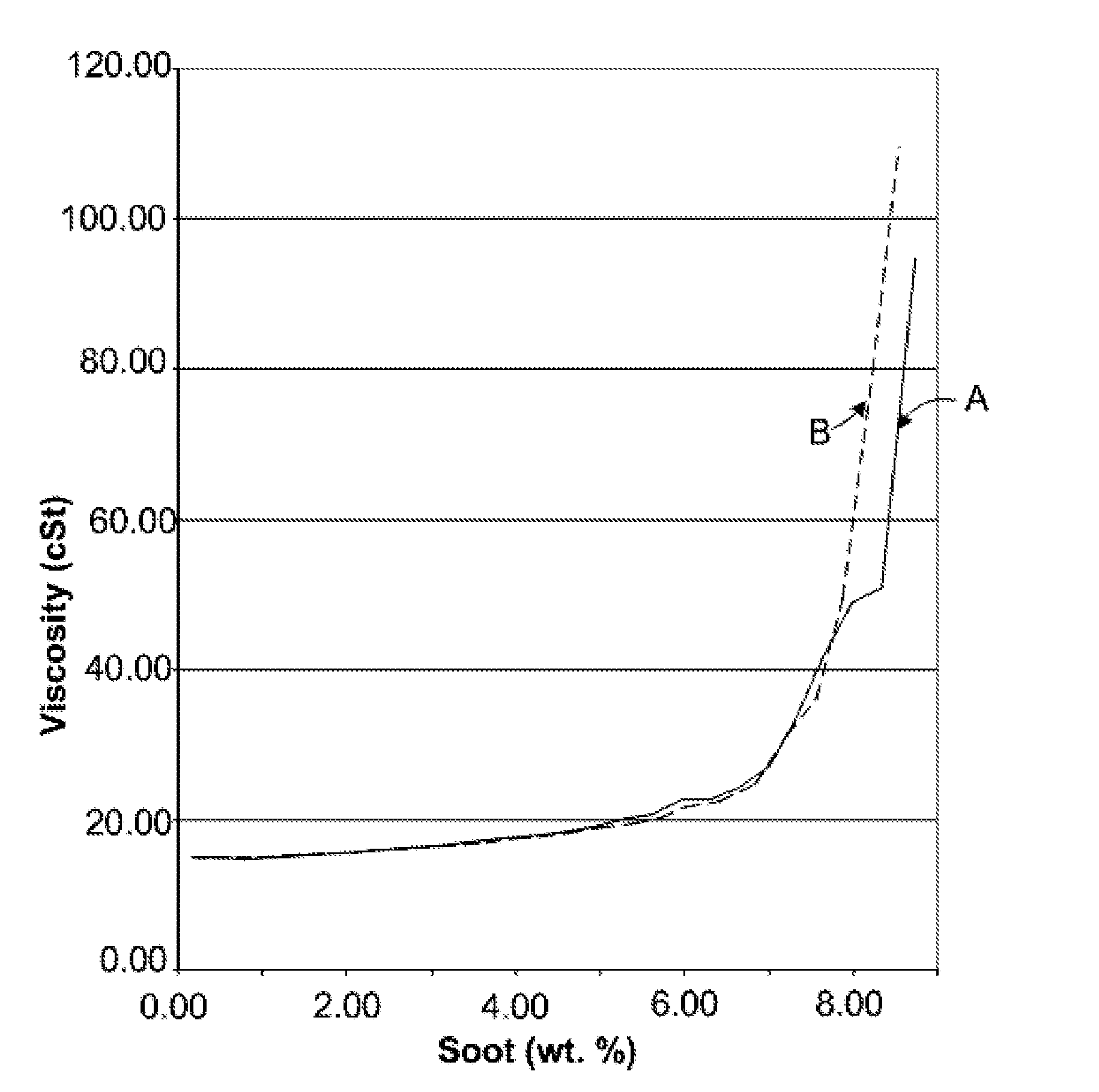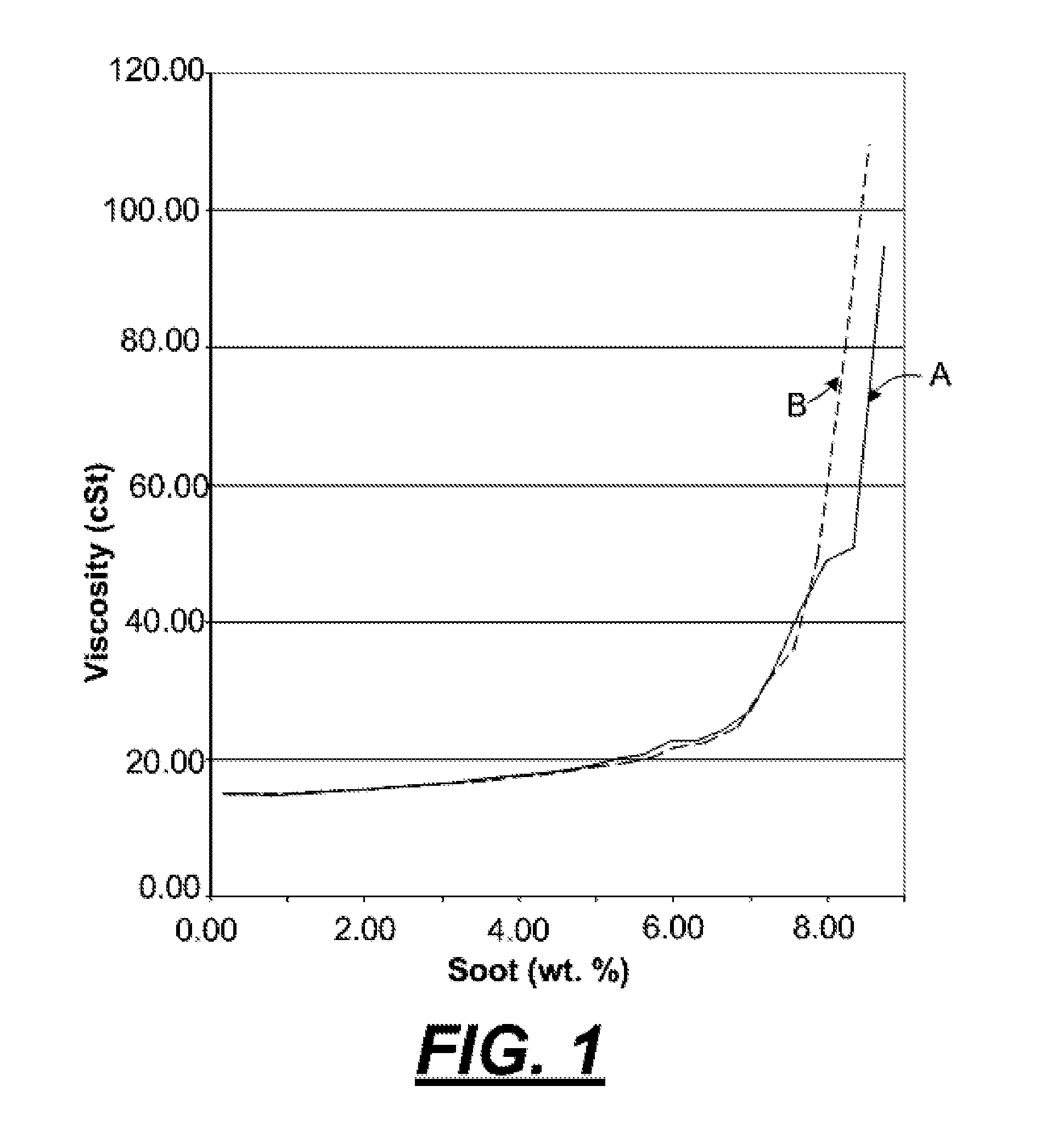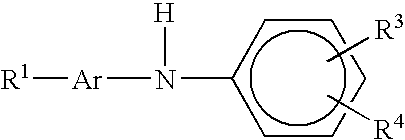Lubricant composition for bio-diesel fuel engine applications
a biodiesel fuel engine and composition technology, applied in the direction of machines/engines, mechanical equipment, auxiliaries, etc., can solve the problems of increasing the soot content of engine lubricants, increasing wear, and the ability of conventional lubricating oils to handle the resulting increased soot load, so as to and reduce the viscosity increase
- Summary
- Abstract
- Description
- Claims
- Application Information
AI Technical Summary
Benefits of technology
Problems solved by technology
Method used
Image
Examples
Embodiment Construction
[0009]As described in more detail below, a lubricating oil for a diesel engine operating on a fuel containing bio-diesel components may be synergistically improved by the addition of a particular highly grafted, multi-functional olefin copolymer. More particularly, a lubricating oil containing a conventional dispersant / inhibitor (DI) package may be significantly improved for use in certain engines operating on bio-diesel fuels by incorporating the highly grafted olefin copolymer as a dispersant / viscosity index improver. Such lubricating oil compositions, as described more fully herein, may be particularly useful for lubricating internal combustion engines (e.g., heavy duty diesel engines, and light duty diesel engines, including diesel engines equipped with exhaust gas recirculator (EGR) systems). Lubricant compositions containing the highly grafted, multi-functional olefin copolymer may have improved soot dispersing (deagglomeration), deposit control, and boundary film formation pe...
PUM
| Property | Measurement | Unit |
|---|---|---|
| boiling point | aaaaa | aaaaa |
| temperature | aaaaa | aaaaa |
| boiling point | aaaaa | aaaaa |
Abstract
Description
Claims
Application Information
 Login to View More
Login to View More - R&D
- Intellectual Property
- Life Sciences
- Materials
- Tech Scout
- Unparalleled Data Quality
- Higher Quality Content
- 60% Fewer Hallucinations
Browse by: Latest US Patents, China's latest patents, Technical Efficacy Thesaurus, Application Domain, Technology Topic, Popular Technical Reports.
© 2025 PatSnap. All rights reserved.Legal|Privacy policy|Modern Slavery Act Transparency Statement|Sitemap|About US| Contact US: help@patsnap.com



